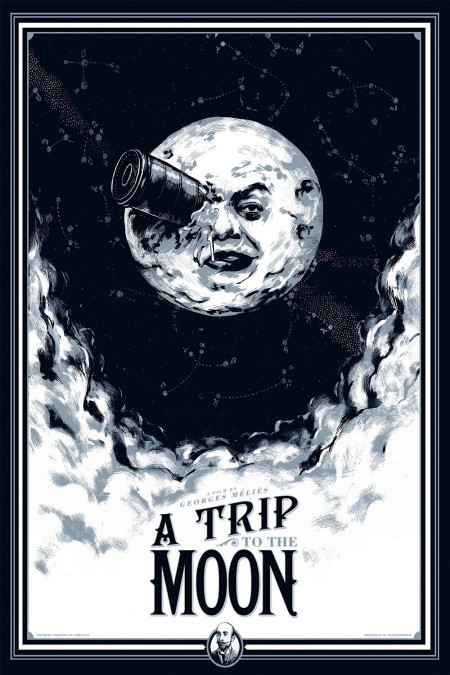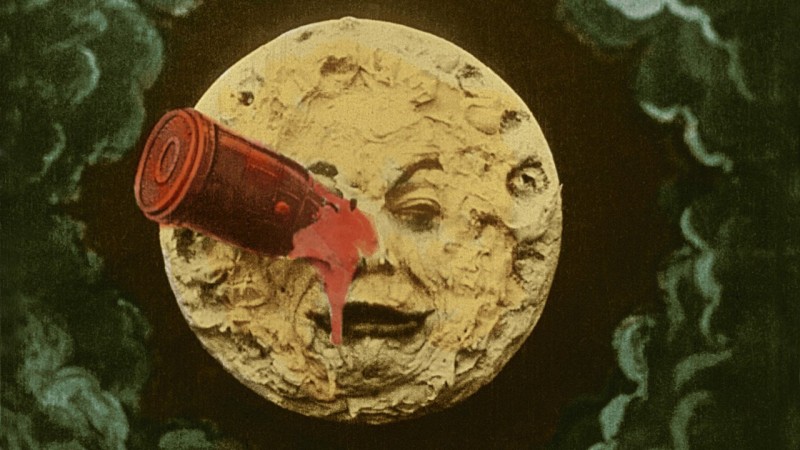A Trip to the Moon

It was 1902 and Georges Méliès was trying for some time to mix his magic tricks and his extraordinary creative imagination to all known filming techniques (some invented by himself). Thanks to his formidable ability to transpose dreams on film, Geroges Melies succeeds in giving life to an enchanting journey like described in the Jules Verne‘s novel From the Earth to the Moon (1865) and H.G. Wells The First Men in the Moon (1901).
The mustachioed French director put us all his soul to realize this masterpiece; and it shows: in the magnificence of the scenery, the obsessive attention of the seabed, the details of the hand drawn scenes, in the pomp of the costumes made specifically for the movie. He squeezed the most out of static shots, enriching them with wonderful special effects never seen until then.
The 15 minutes length (for the time, very long), the application of colors by hand made frame by frame in post-production, the extraordinary amount of actors employed, including dancers of the Chatelet Ballet and Folies-Bergere acrobats, the three months of shooting, the exceptional cost of 10 thousands francs, as well as the primacy of the first film to have a worldwide success (so much so that Thomas Edison copied the film for personally distribute it in America), combine to provide a place of honor to this movie, in the Olympus of the best visual works of all time. The more darings could define it the first small blockbuster in film history without straying too far from reality.
Even today, after over 100 years, the image of the spacecraft-bullet that approaches the smiling face of a dreamy moon and then stick in his right eye, is perhaps one of the most recognizable and emblematic art picture of all time, a powerful symbol which perfectly represents what the avant-garde cinema become: a laboratory of experiments, a world of dreamers who undertook to turn into reality all that before seemed just impossible.
